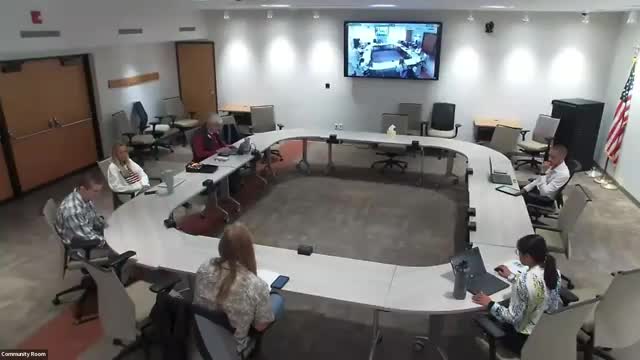Littleton plans major housing code overhaul to boost options
October 04, 2024 | Littleton City, Arapahoe County, Colorado
This article was created by AI summarizing key points discussed. AI makes mistakes, so for full details and context, please refer to the video of the full meeting. Please report any errors so we can fix them. Report an error »

In a recent government meeting, city planners in Littleton discussed the ongoing Neighborhood Housing Opportunities Project, focusing on the concept of \"missing middle housing.\" Senior planner Serena Tasneem provided an overview of the project, which aims to amend zoning codes to facilitate a range of housing types that fall between single-family homes and larger multifamily buildings.
The discussion highlighted the definition of missing middle housing, which includes various types of residential units such as accessory dwelling units (ADUs), duplexes, triplexes, quadplexes, multiplexes, and cottage communities. These housing types are designed to address the growing demand for diverse housing options in the city, particularly in designated neighborhood zone districts.
Currently, ADUs are categorized into three types: attached, detached, and contained. The proposed amendments aim to simplify these categories into just two: detached and contained. This change is expected to streamline the building process and expand the potential for ADUs across all residential zones, removing previous restrictions that required alley access for detached units.
The meeting also addressed the classification of duplexes, which are currently permitted in specific zones as a use by right, meaning they can be built without additional public hearings. However, there is a push from council members to expand this classification citywide, which will be a topic of further discussion in upcoming meetings.
Triplexes and quadplexes, which consist of three or four units respectively, currently lack a distinct land use category and are classified under single-family attached dwellings or multiplexes. The planners noted that multiplexes are permitted in certain zones, primarily around commercial corridors.
Lastly, the concept of cottage communities was introduced, which involves clusters of small homes around a shared open space. However, this housing type is currently restricted to areas adjacent to multifamily or commercial zones, limiting its potential implementation in Littleton.
The meeting concluded with an invitation for community engagement on these proposed changes, emphasizing the city's commitment to enhancing housing opportunities and addressing the needs of its residents.
The discussion highlighted the definition of missing middle housing, which includes various types of residential units such as accessory dwelling units (ADUs), duplexes, triplexes, quadplexes, multiplexes, and cottage communities. These housing types are designed to address the growing demand for diverse housing options in the city, particularly in designated neighborhood zone districts.
Currently, ADUs are categorized into three types: attached, detached, and contained. The proposed amendments aim to simplify these categories into just two: detached and contained. This change is expected to streamline the building process and expand the potential for ADUs across all residential zones, removing previous restrictions that required alley access for detached units.
The meeting also addressed the classification of duplexes, which are currently permitted in specific zones as a use by right, meaning they can be built without additional public hearings. However, there is a push from council members to expand this classification citywide, which will be a topic of further discussion in upcoming meetings.
Triplexes and quadplexes, which consist of three or four units respectively, currently lack a distinct land use category and are classified under single-family attached dwellings or multiplexes. The planners noted that multiplexes are permitted in certain zones, primarily around commercial corridors.
Lastly, the concept of cottage communities was introduced, which involves clusters of small homes around a shared open space. However, this housing type is currently restricted to areas adjacent to multifamily or commercial zones, limiting its potential implementation in Littleton.
The meeting concluded with an invitation for community engagement on these proposed changes, emphasizing the city's commitment to enhancing housing opportunities and addressing the needs of its residents.
View full meeting
This article is based on a recent meeting—watch the full video and explore the complete transcript for deeper insights into the discussion.
View full meeting
